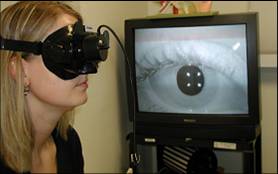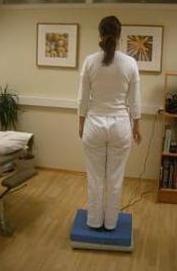Aberdeen Balance Clinic
Welcome to Aberdeen Balance Clinic, Scotland’s specialist balance centre, offering you a one-stop assessment, diagnosis and treatment programme for your dizziness, vertigo or imbalance.
Aberdeen Balance Clinic is based at In Balance Physiotherapy in the centre of Aberdeen City. The clinic is led by Alan Sealy, a leading Clinical Specialist Physiotherapist and expert in Vestibular Rehabilitation. We have extensive expertise in the diagnosis and treatment of “dizziness”, vestibular & other balance disorders.
Treatment success rate is extremely high and the prognosis for most vestibular (balance) disorders is very good. The latest research evidence demonstrates the positive effects of vestibular treatment / rehabilitation.
“I’m Dizzy” – What to expect
Dizziness is very common, it is accepted that up to one third of all adults may become dizzy at some time, and this figure increases as we become older. In the over-75’s age group, dizziness is the most common reason to see your GP. It is often extremely distressing and greatly affects your quality of life.

Luckily, most forms of dizziness are easily treatable. The key is obtaining a correct diagnosis early on. At Aberdeen Balance Clinic, you will receive a thorough assessment, including neuro-otological and opthalmic tests, dynamic posturography and Video-Nystagmography (video-goggles to monitor eye movements).
Alan Sealy himself will carry out your assessment and, where possible, give you a clear diagnosis, based upon the test results and his considerable clinical experience. Where necessary, we liase with specialist ENT consultants at BMI Albyn Hospital.

Vestibular treatment programmes may include, for example, treatment manouevres for Benign Paroxysmal Positional Vertigo, (BPPV), along with a programme of individually-tailored vestibular rehabilitation exercises. These typically involve eye, neck and whole-body coordination exercises and are targeted specifically towards your condition.
The whole consultation may take betwen 45 – 90 minutes. It is usual to attend follow-up sessions over the next few weeks, either for further treatments or in order to progress your rehabilitation programme.
Treatment success rate is extremely high and the prognosis for most vestibular (balance) disorders is very good. Modern, good-quality research-evidence demonstrates the positive effects of vestibular treatment / rehabilitation.
Vestibular Rehabilitation Therapy (VRT)
Why is therapy needed?
If the brain cannot rely on the information it receives from the vestibular system, a person’s ability to maintain posture and coordinate balance can become overly dependent on vision or on the information received from the muscles and joints (proprioception).
This can lead to developing new patterns of movement to compensate for the change and to avoid head movements that are apt to create symptoms of dizziness and nausea. For example, a person might adopt an exaggerated hip sway as a method of balancing, might swivel the entire body rather than just the head in turning to look at something, or might always look down at the floor to avoid what appears as a confusing swirl of activity.
Unfortunately, these types of adaptation can result in headache, neckache, muscle stiffness, general fatigue, and a decrease in the ability to retrain the brain to adjust to the vestibular problem, hence making the symptoms much worse.
The goal of VRT is to retrain the brain to recognize and process signals from the vestibular system in coordination with information from vision and proprioception. This often involves desensitizing the balance system to movements that provoke symptoms.
What happens during vestibular therapy? A qualified therapist will first perform a thorough evaluation. This includes observing posture, balance, movement, and compensatory strategies.
Using the result of this evaluation, the therapist will develop an individualized treatment plan that will include exercises to be performed both in the therapy department and at home and that combine specific head and body movements with eye exercises. Many times, treatment may also include increasing activities and exercise in order to strengthen muscles and increase tolerance for certain stimuli.
Some of the exercise and activities may at first cause an increase in symptoms, as the body and brain attempt to sort out the new pattern of movements. But with time and consistent effort, the coordination of signals from the eyes, proprioception, and vestibular system will occur.
How does therapy help? In most cases, balance improves if the exercises are correctly and faithfully performed. Muscle tension, headaches, and fatigue will diminish, and symptoms of dizziness, vertigo, and nausea will decrease or disappear. Many times, vestibular VRT is so successful that no other treatment is required.

